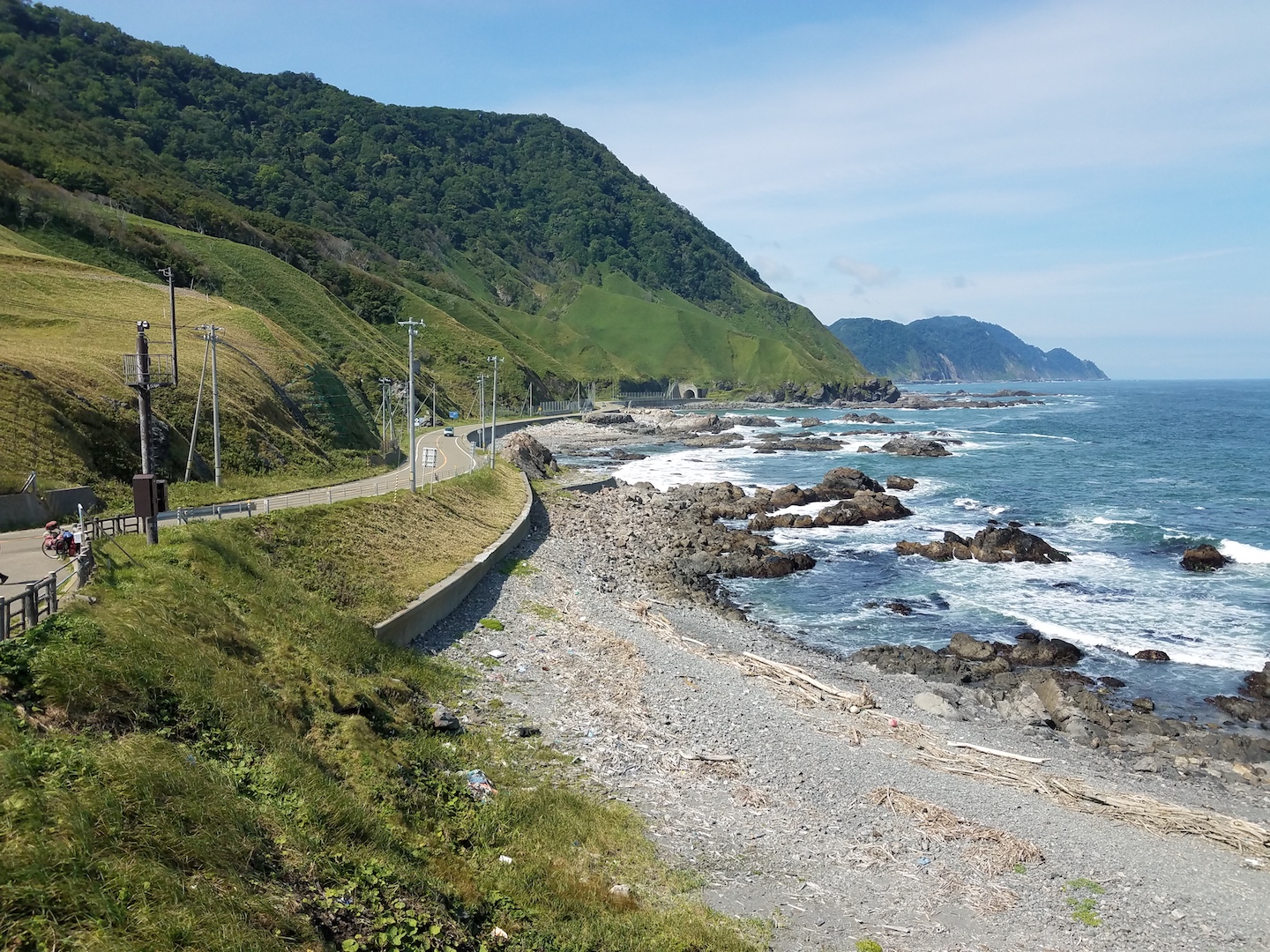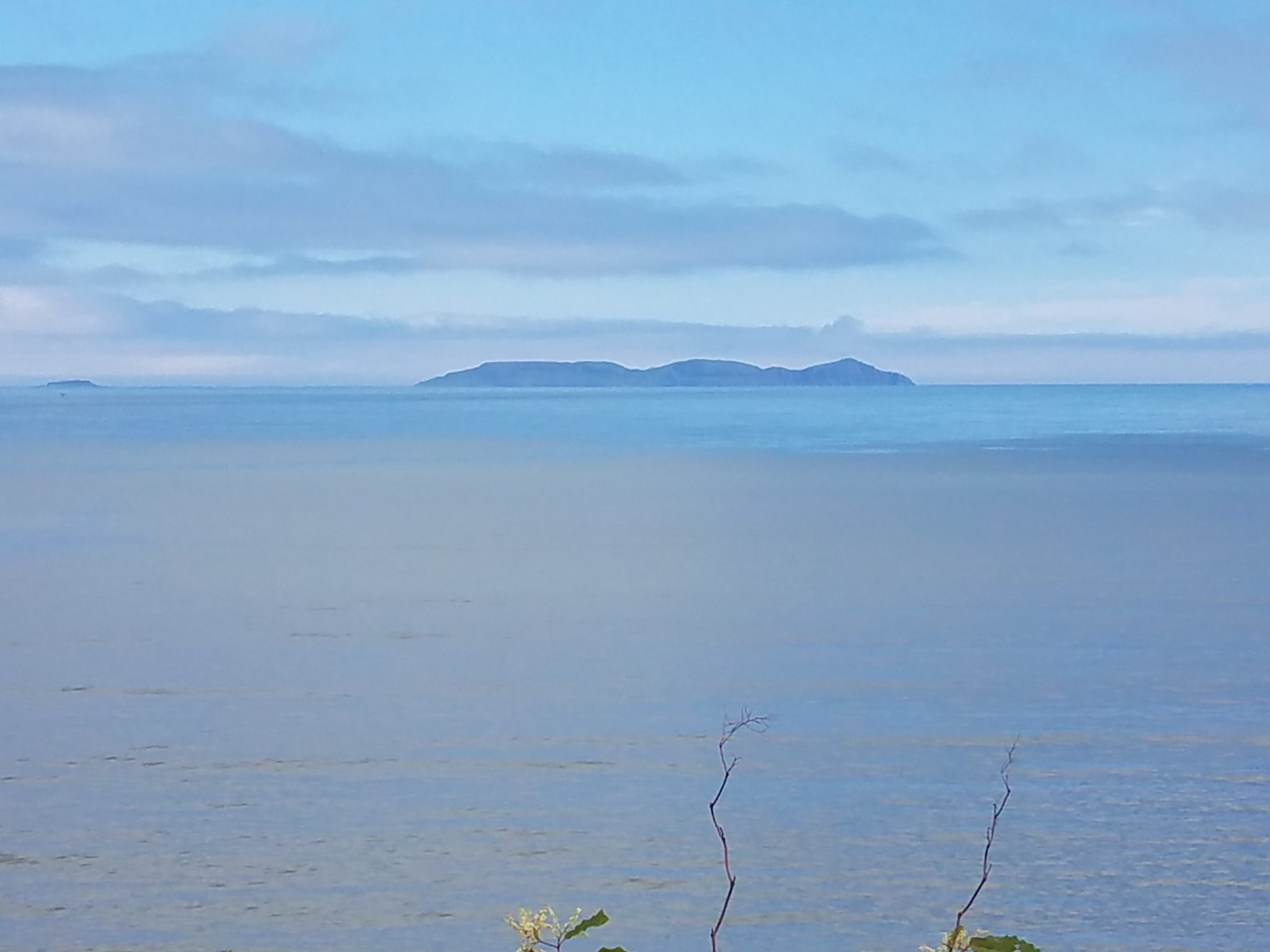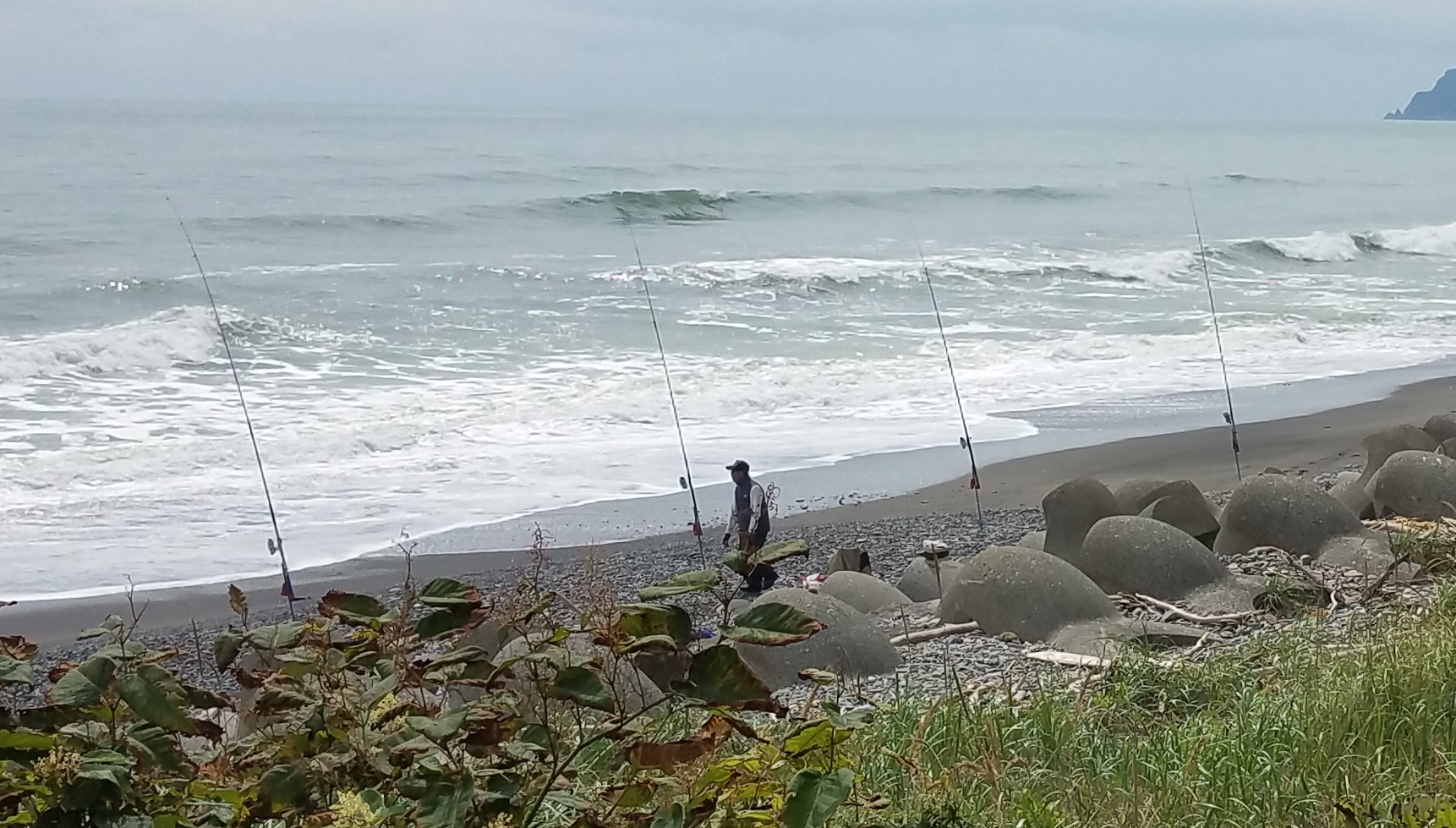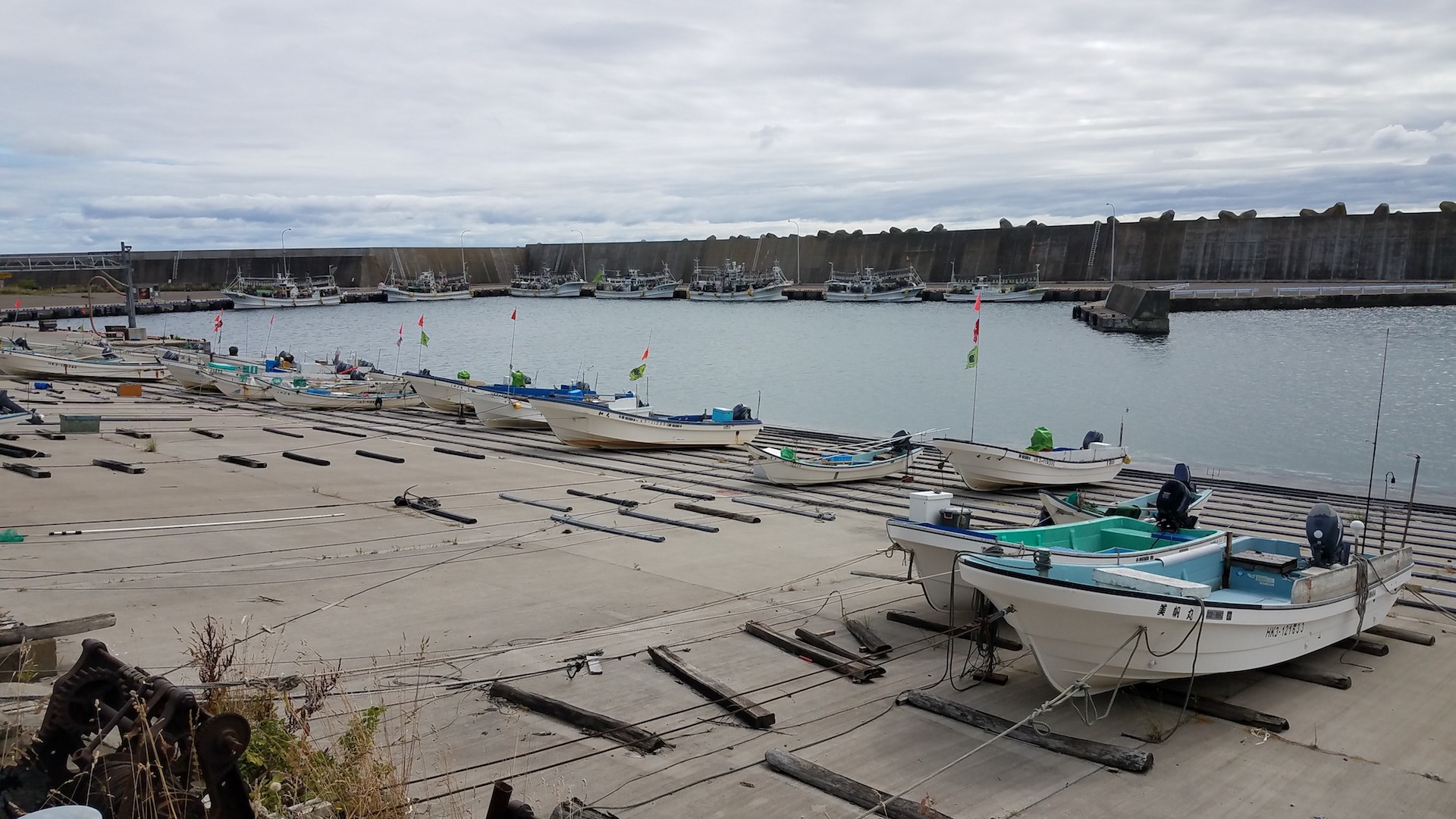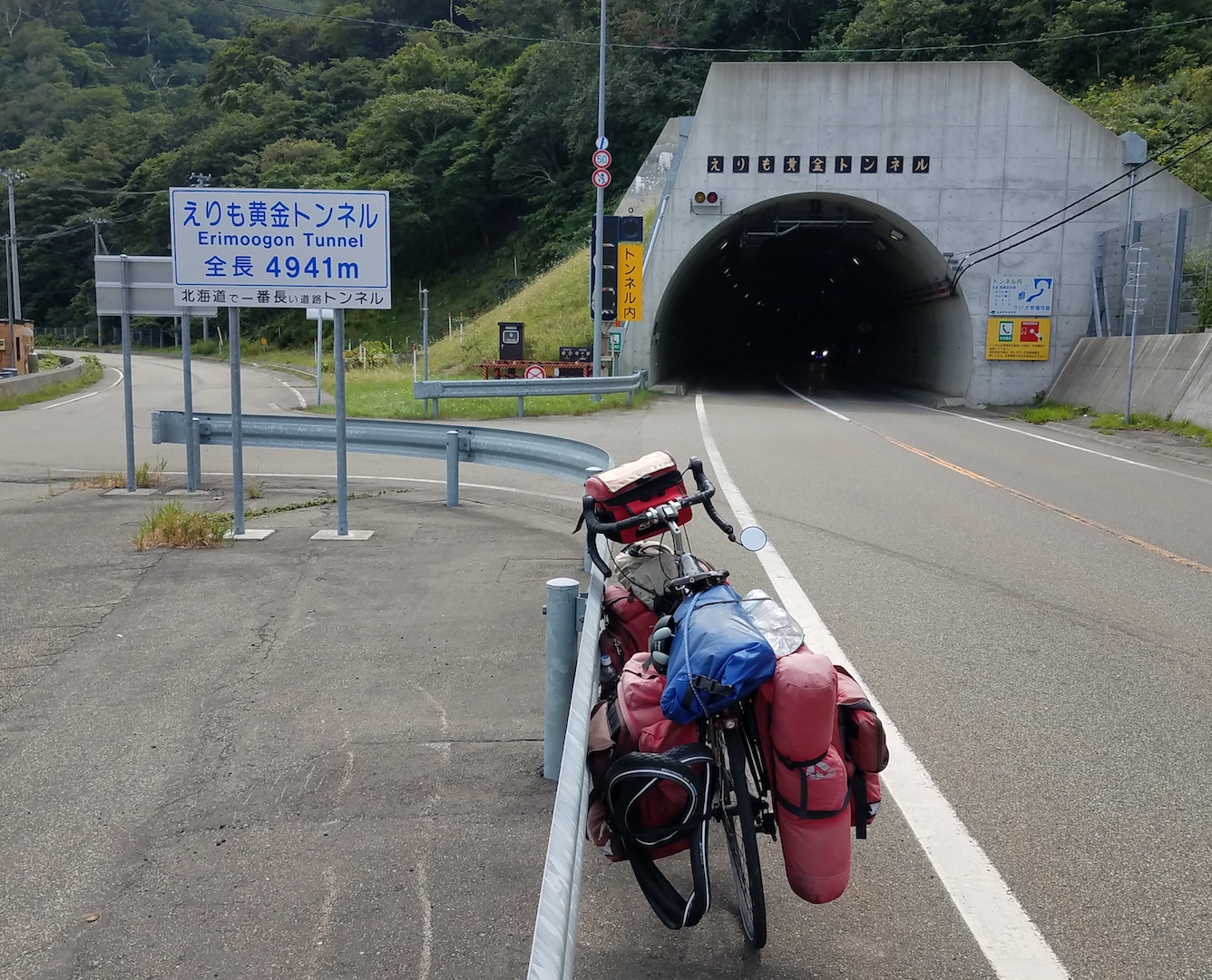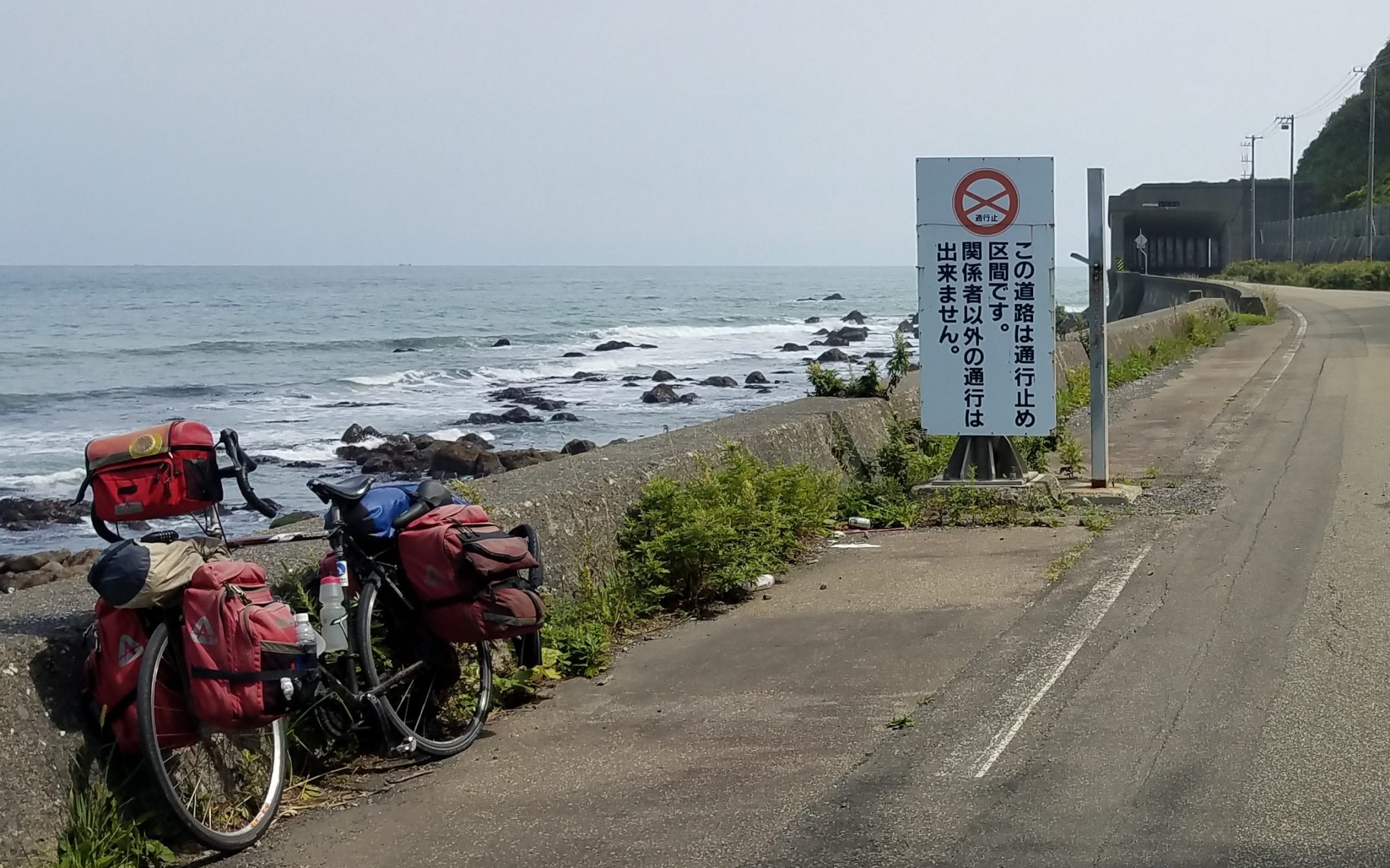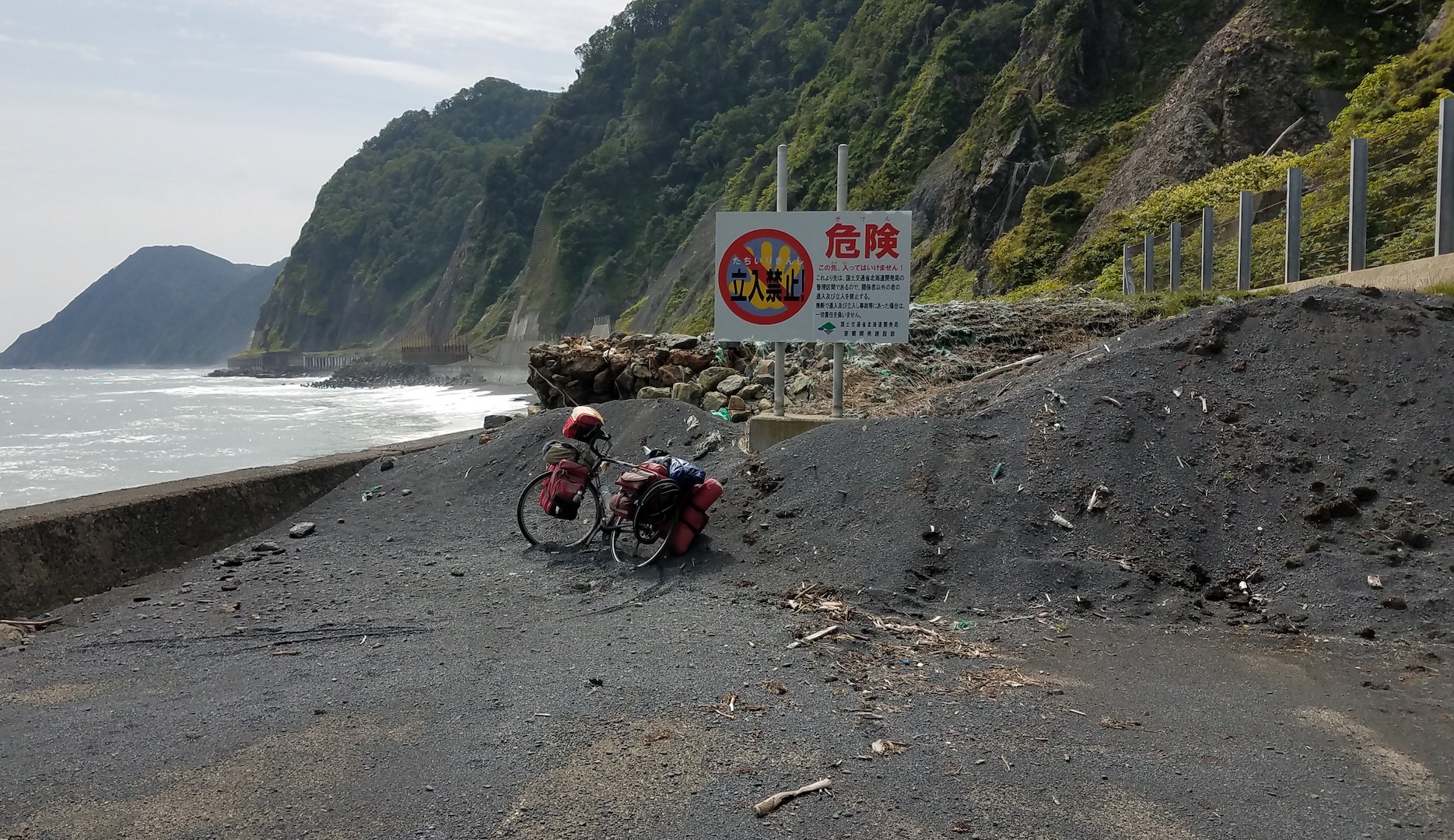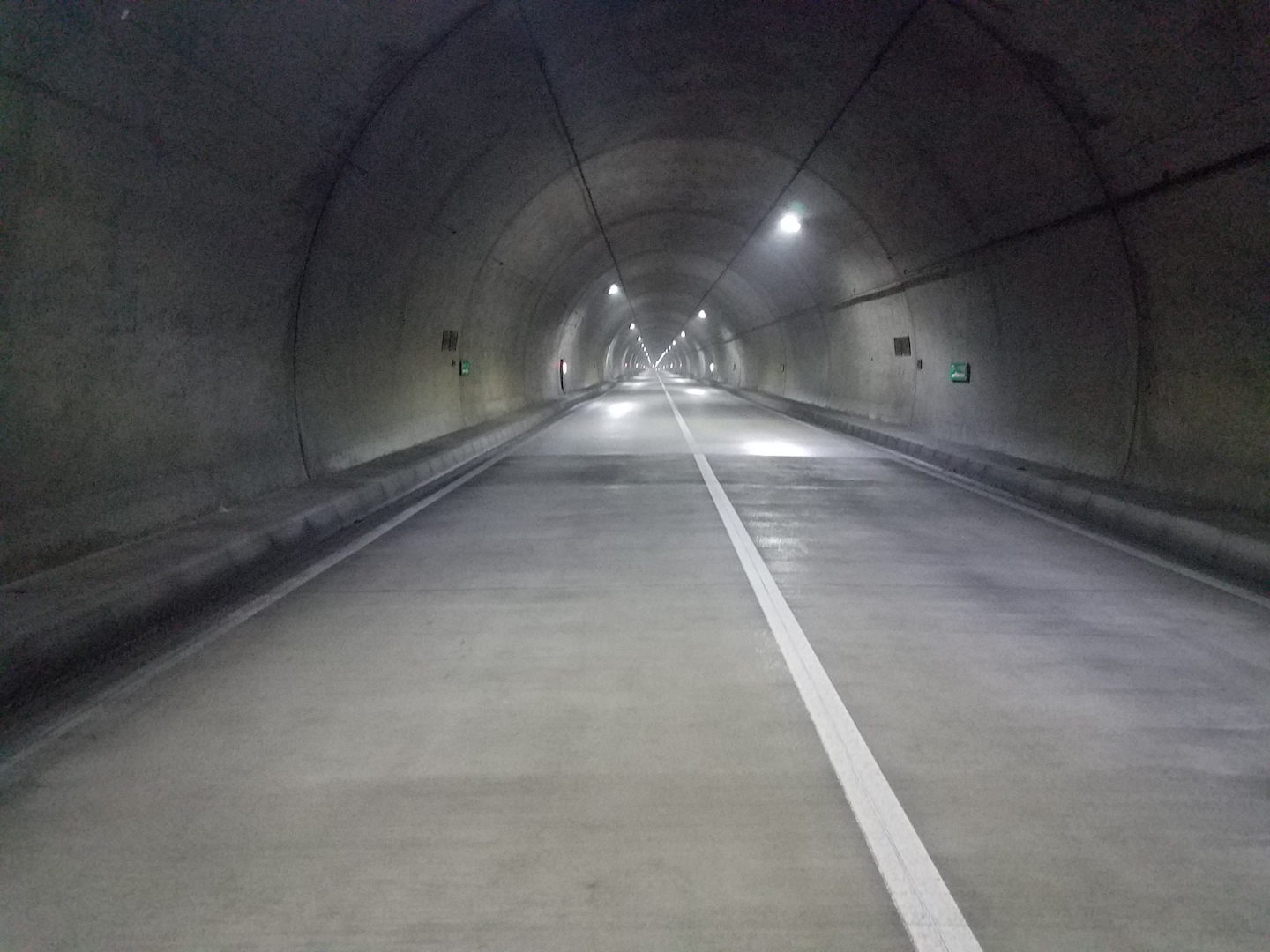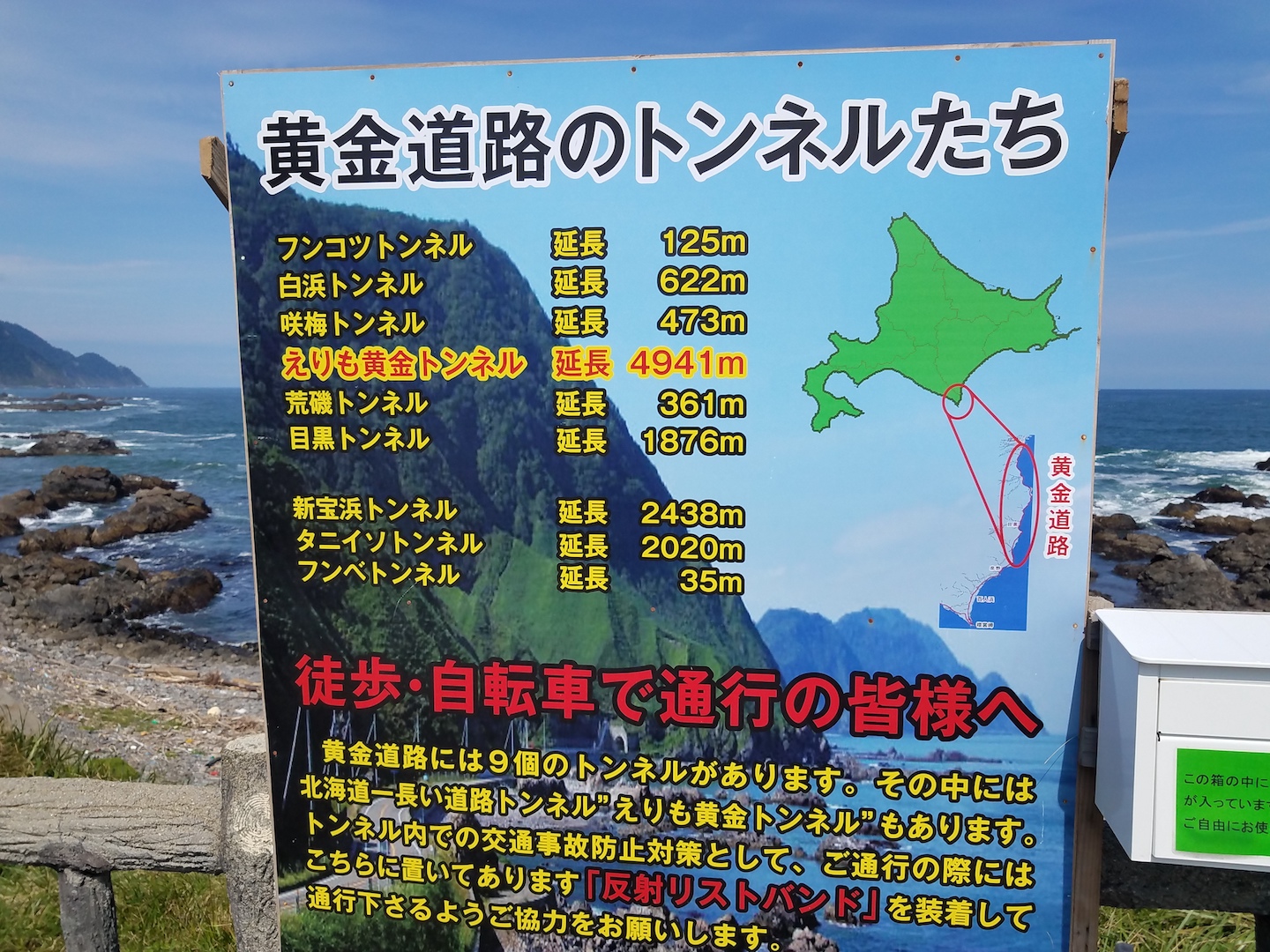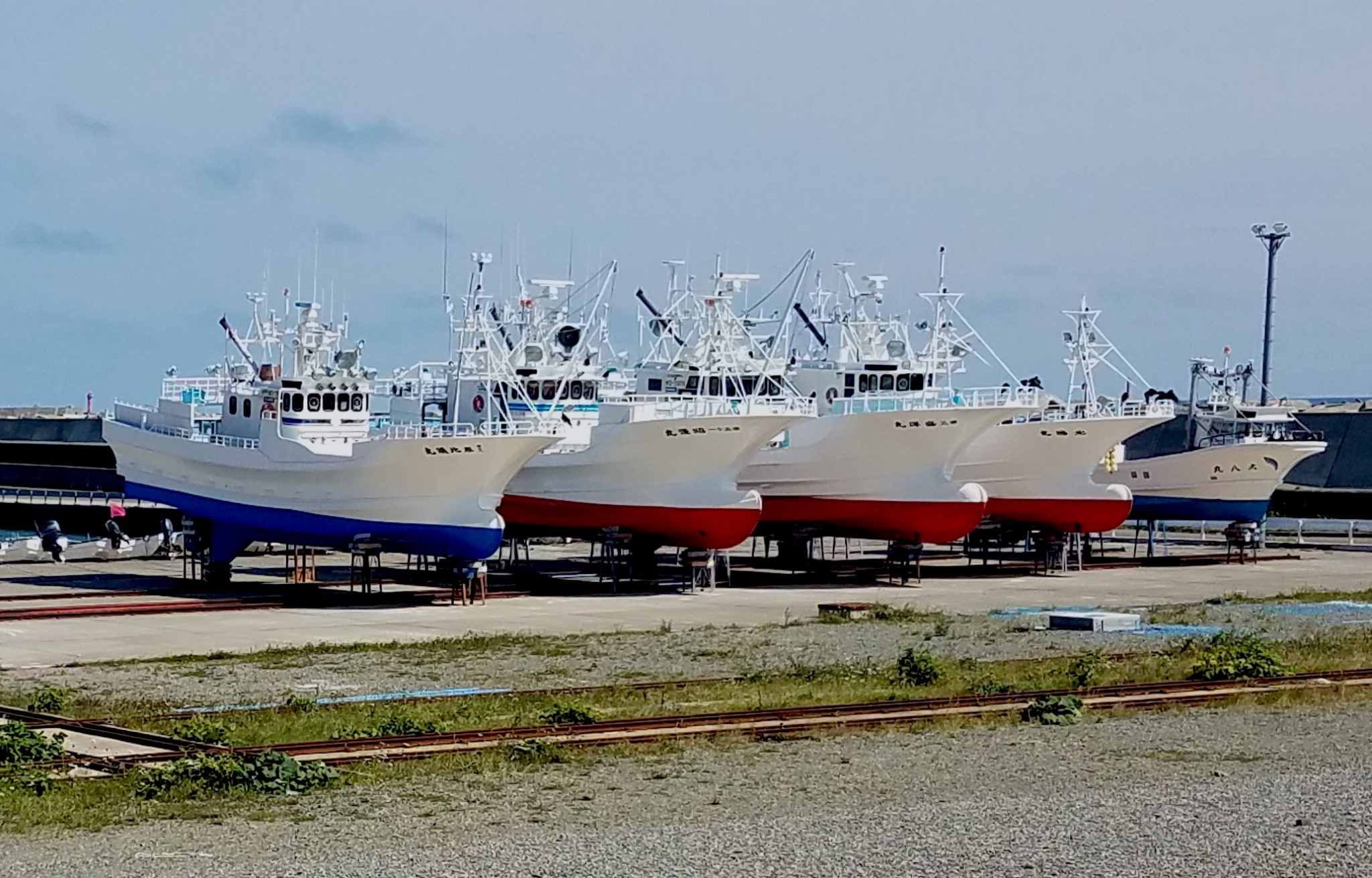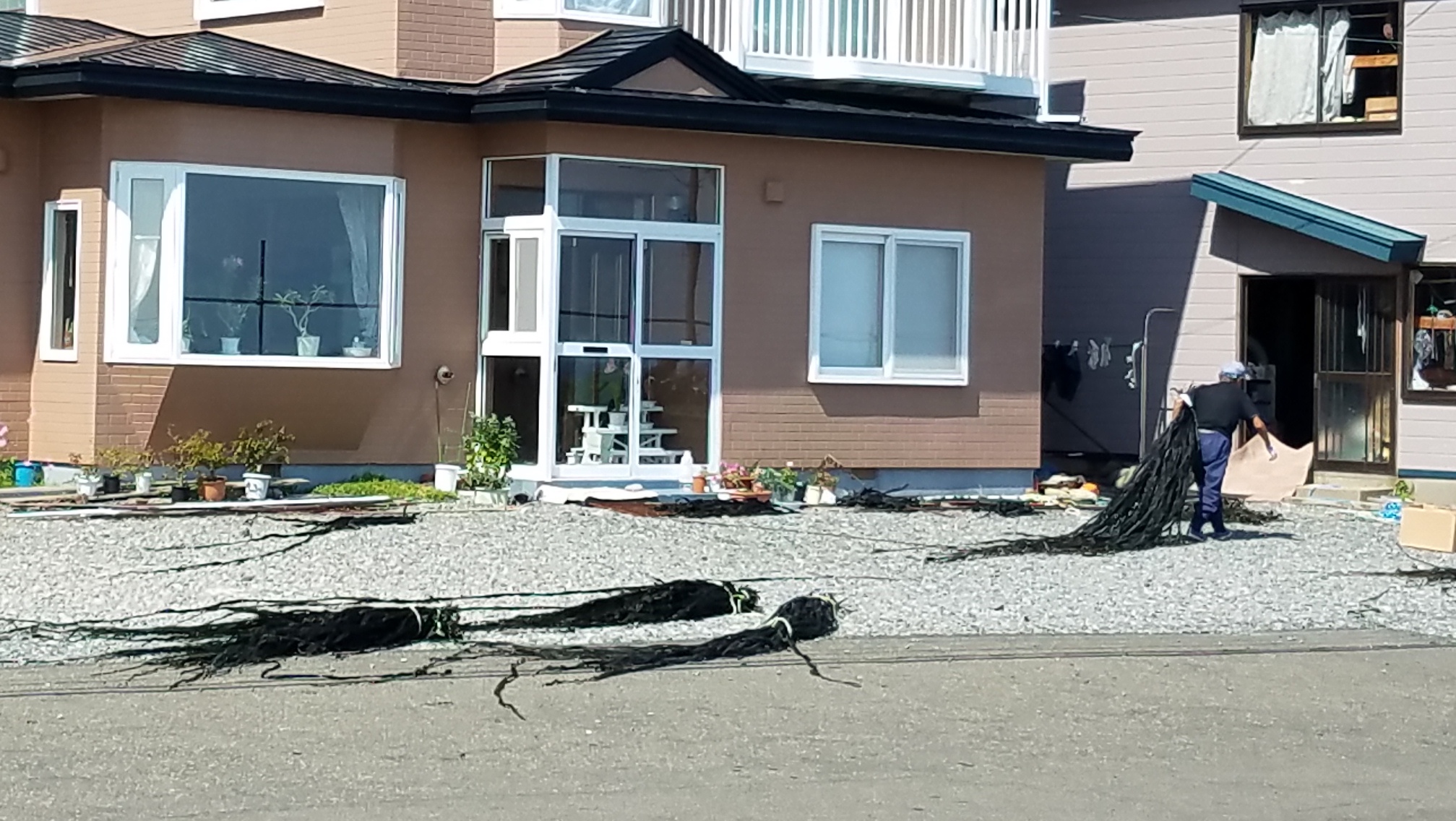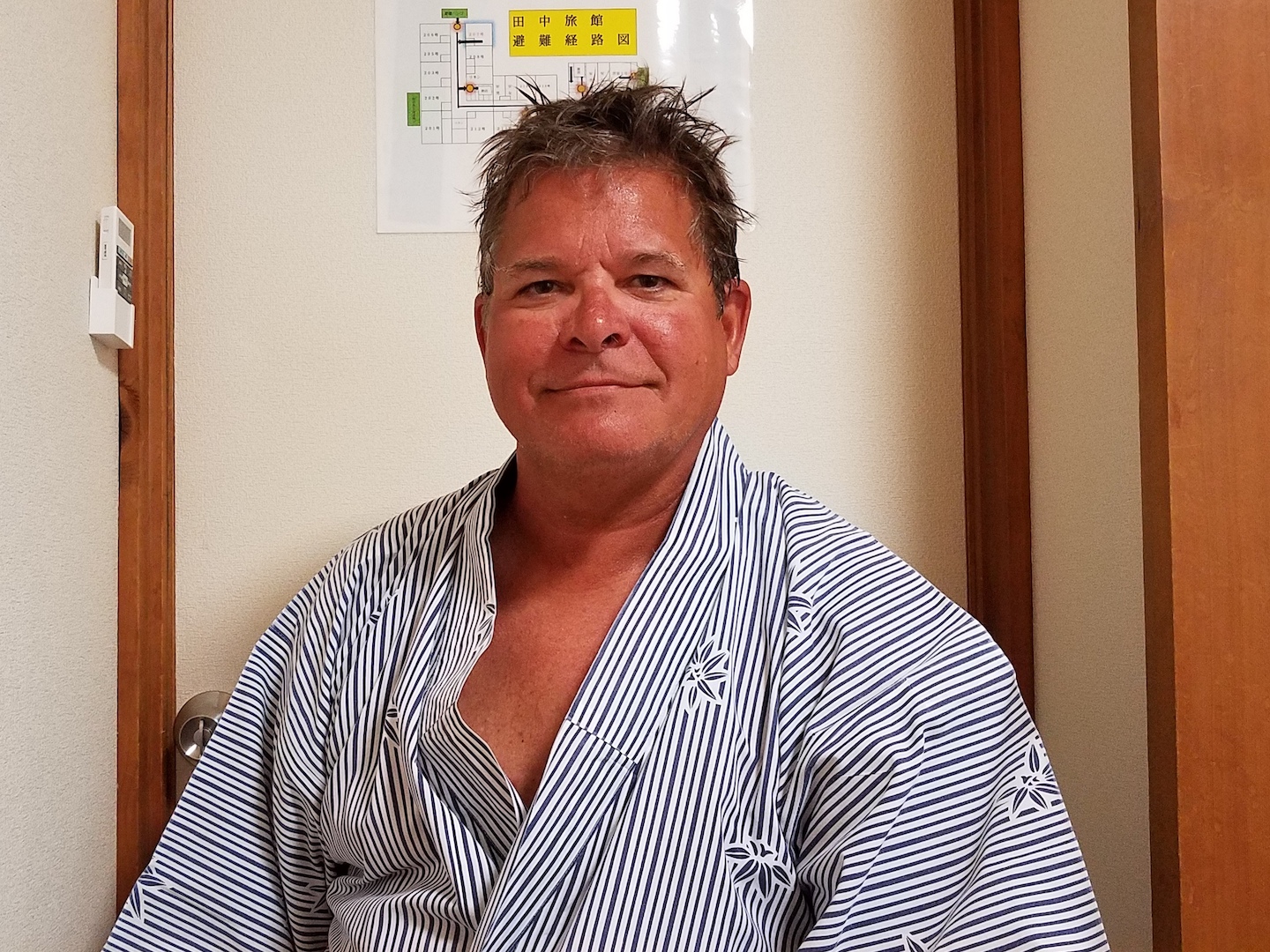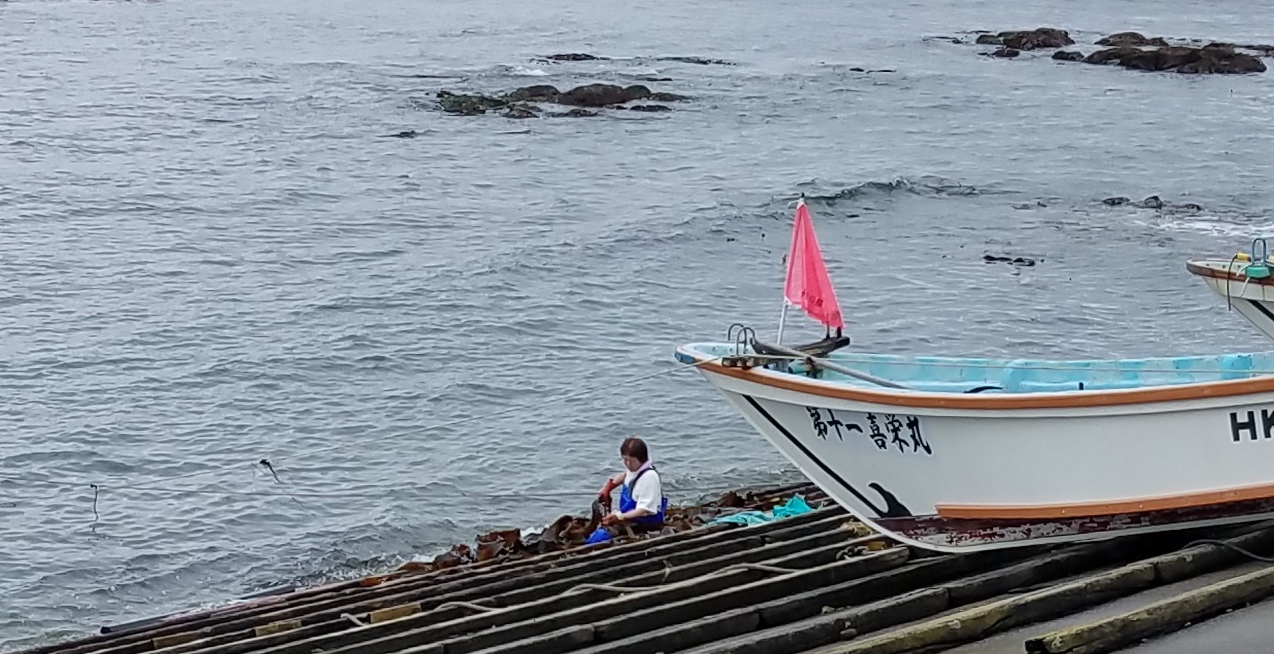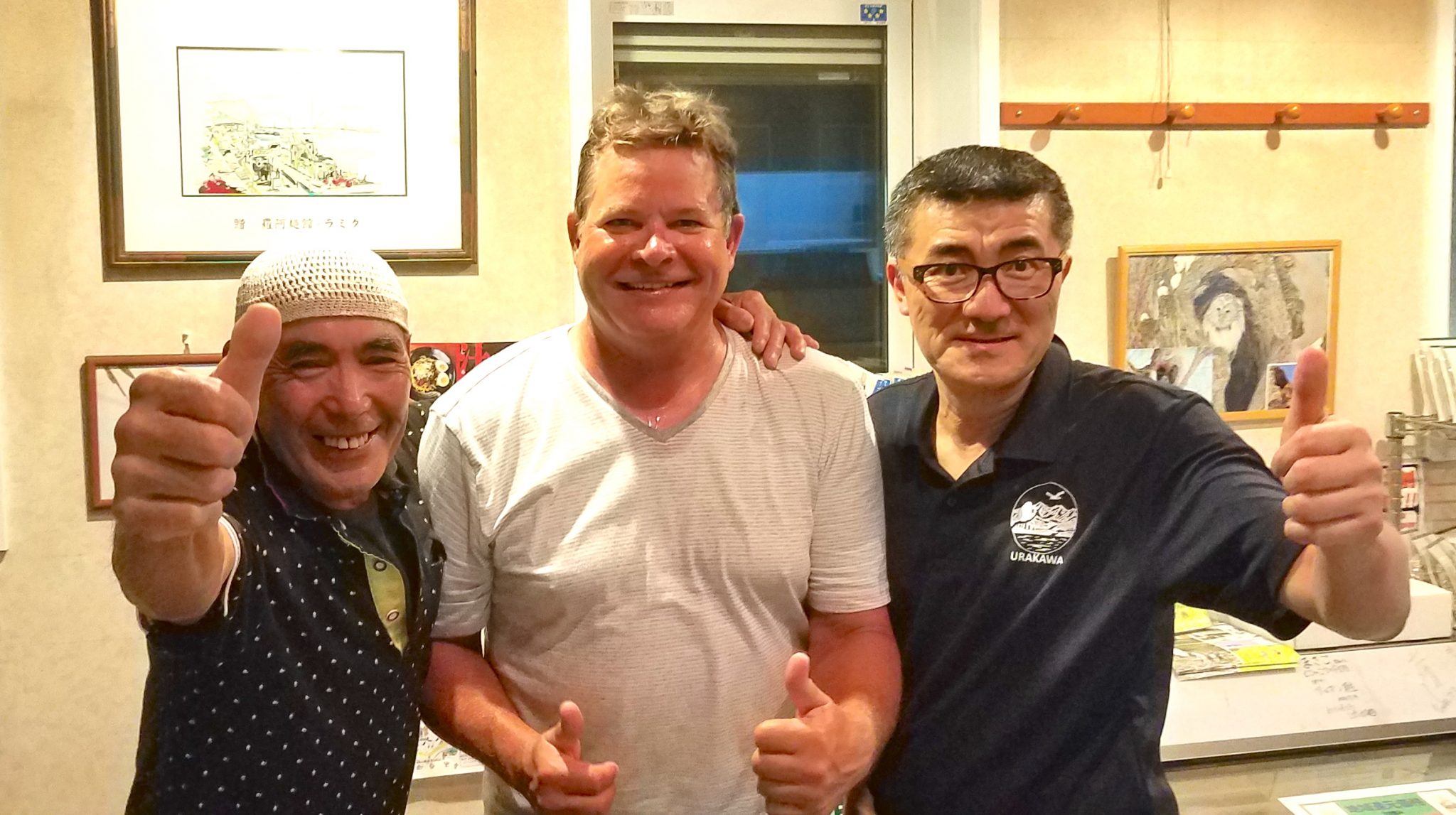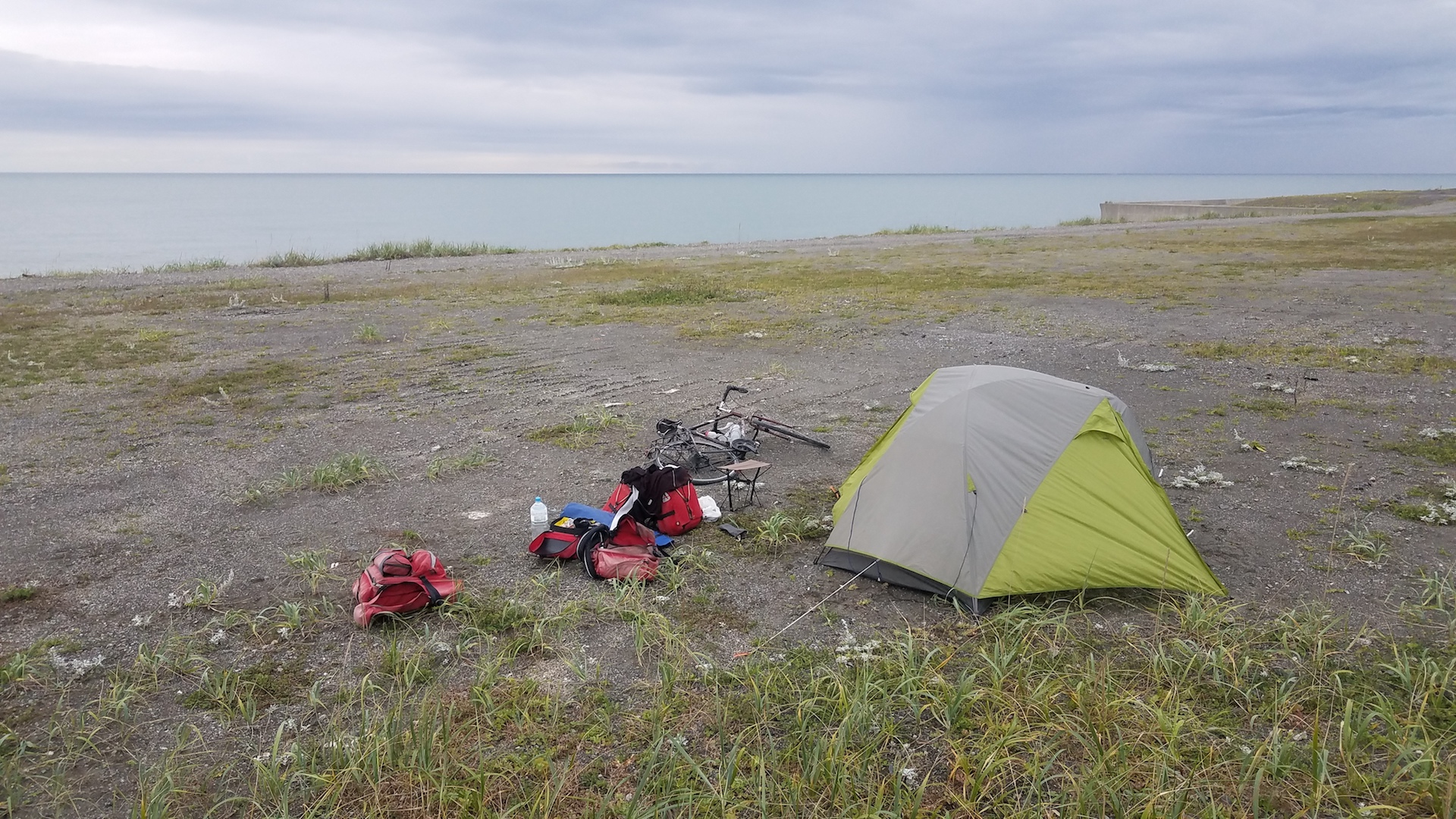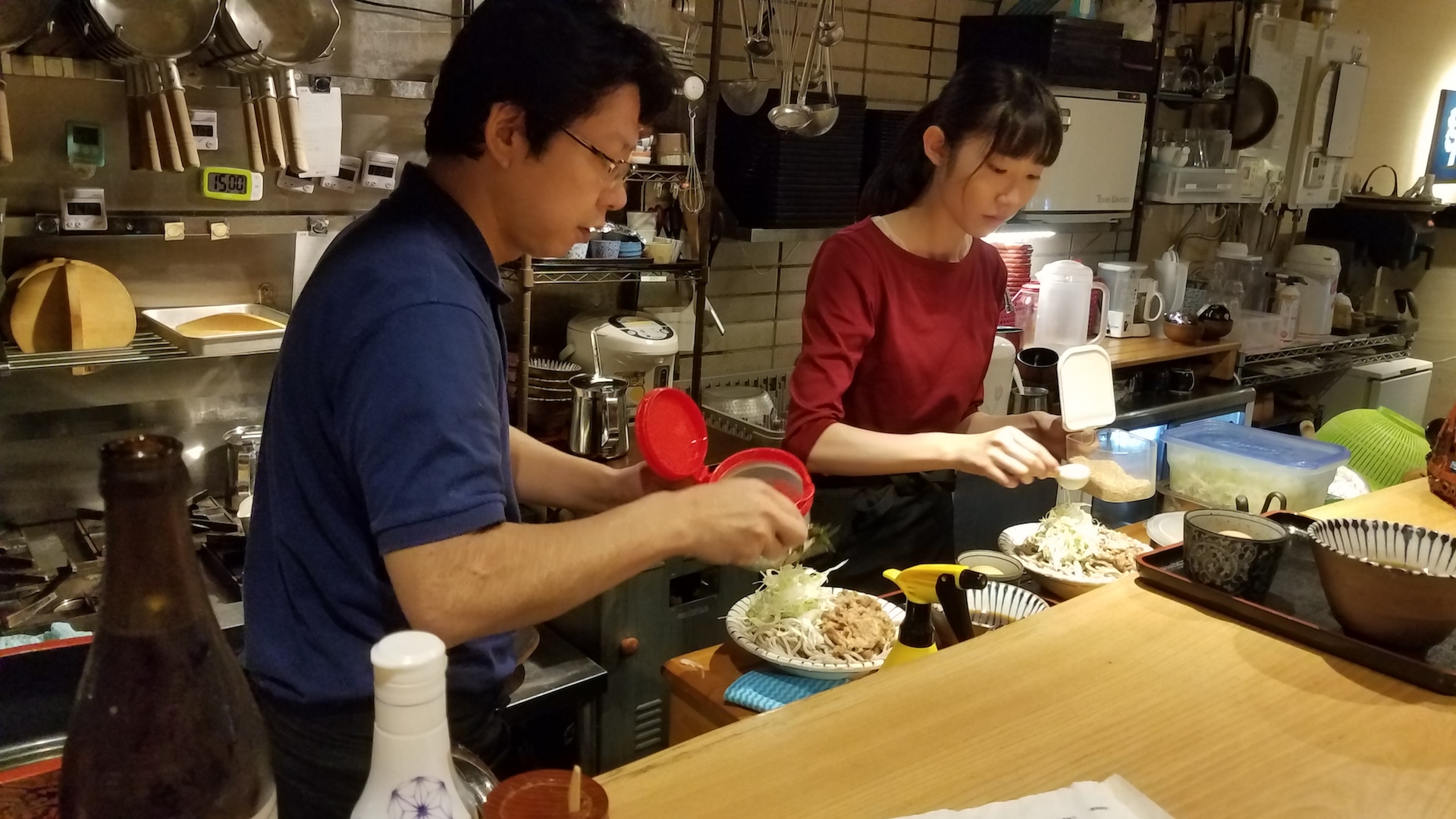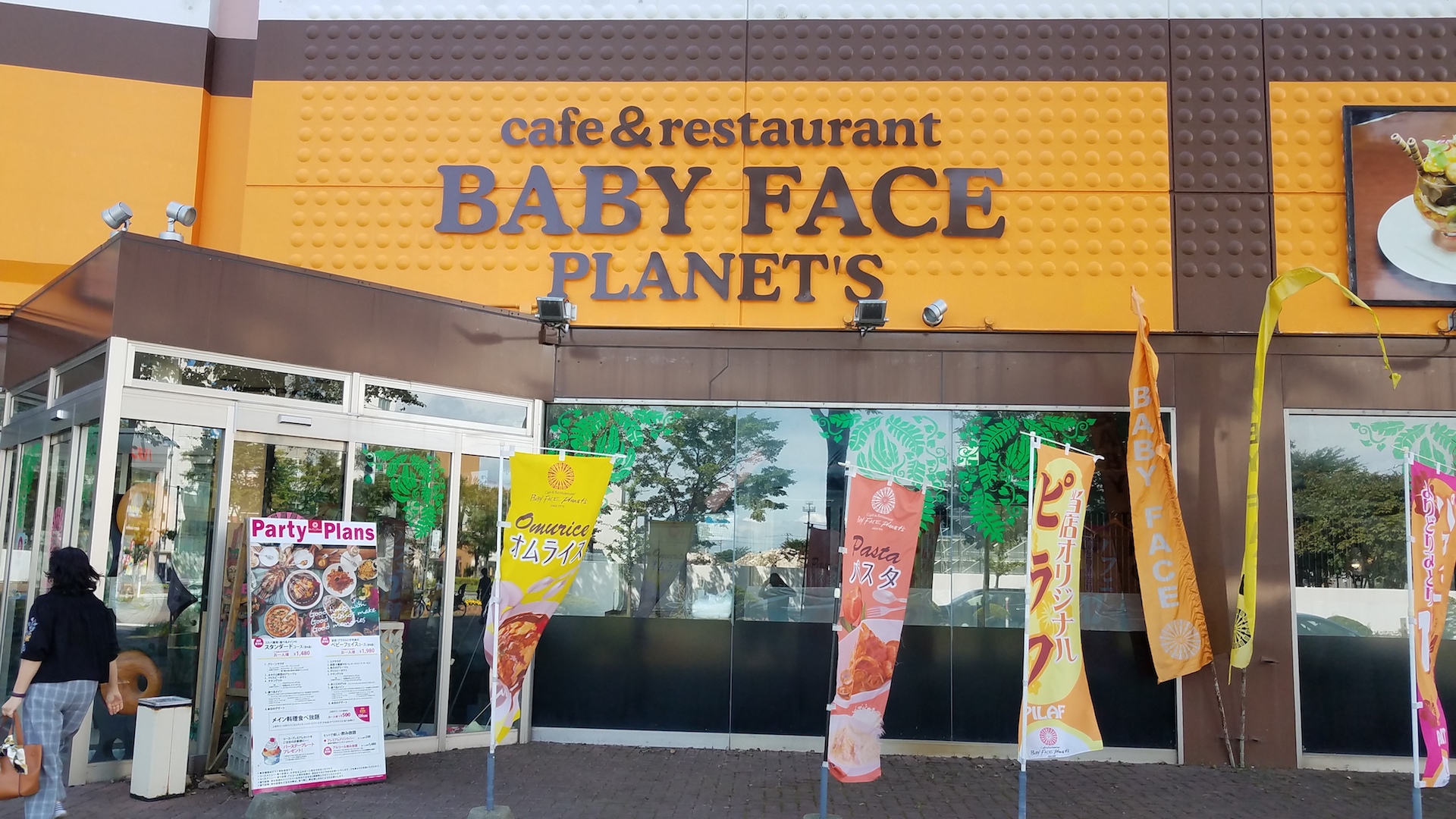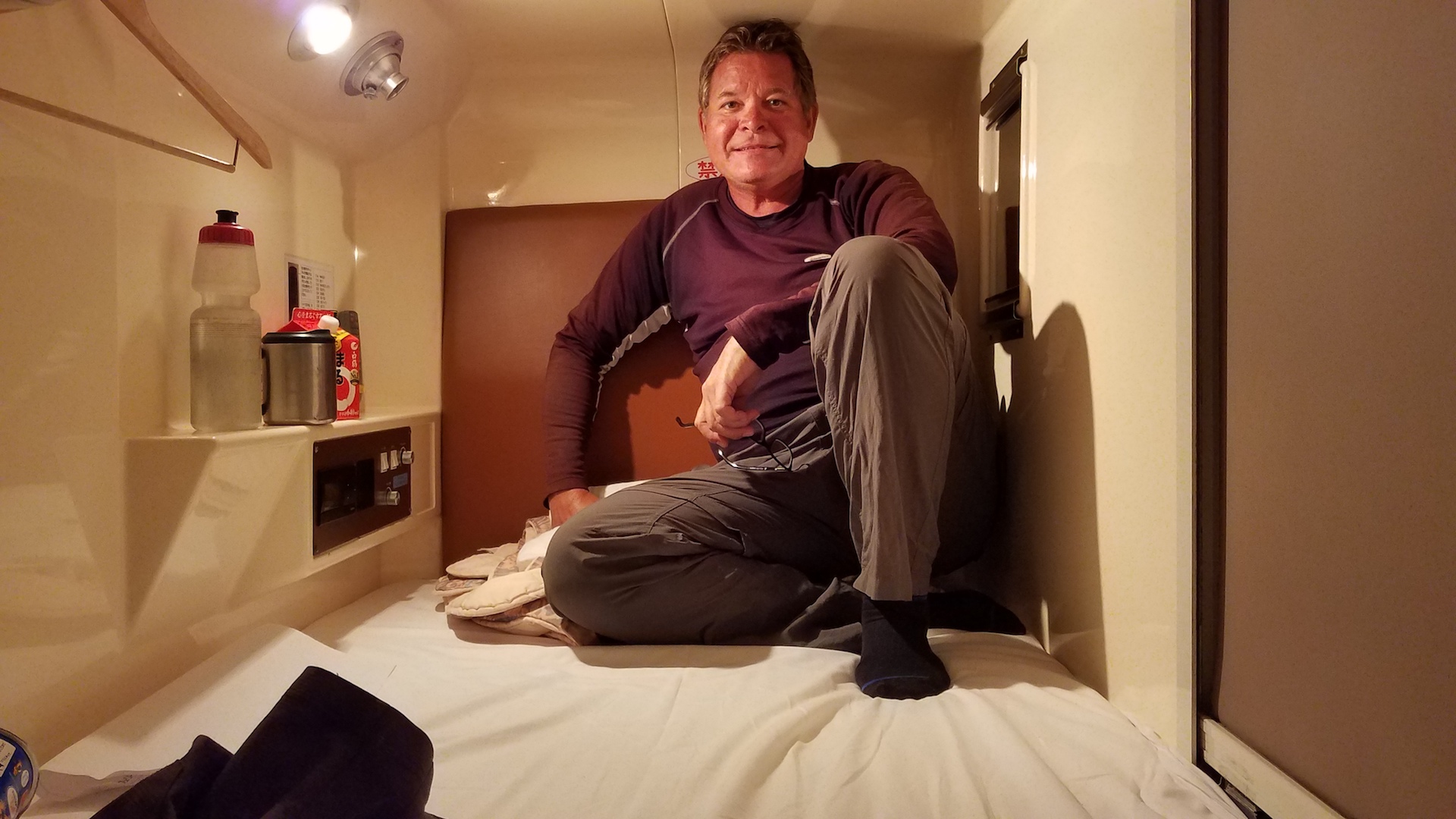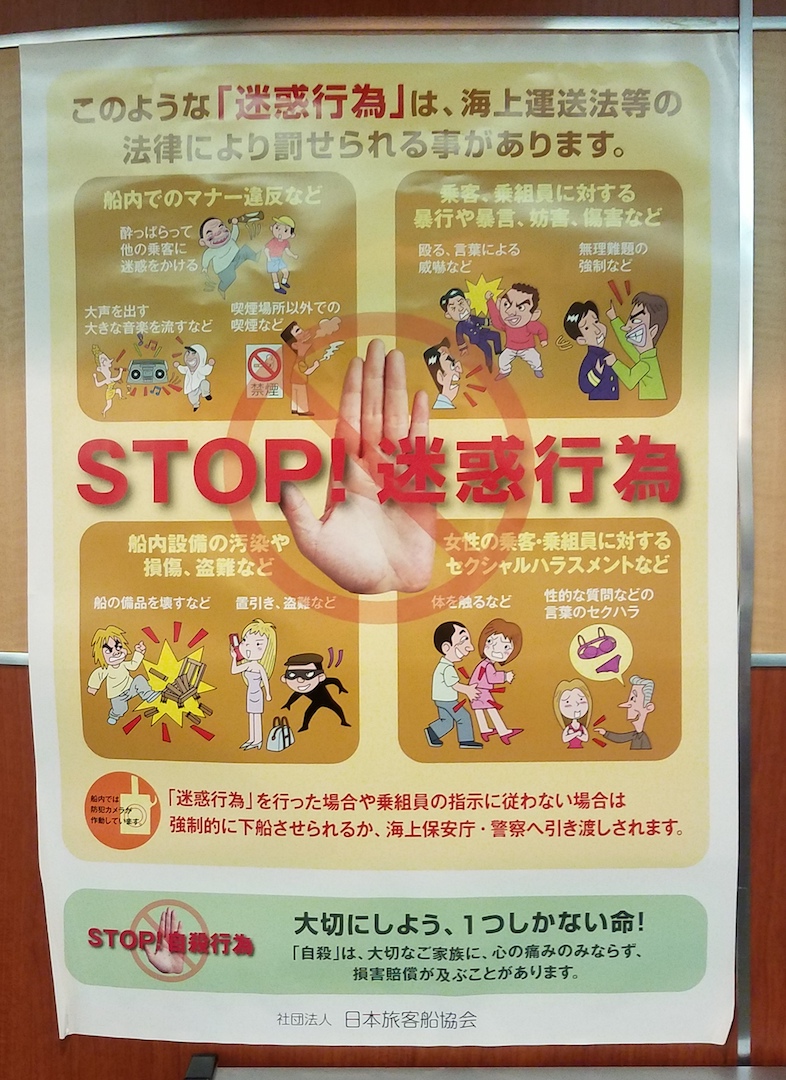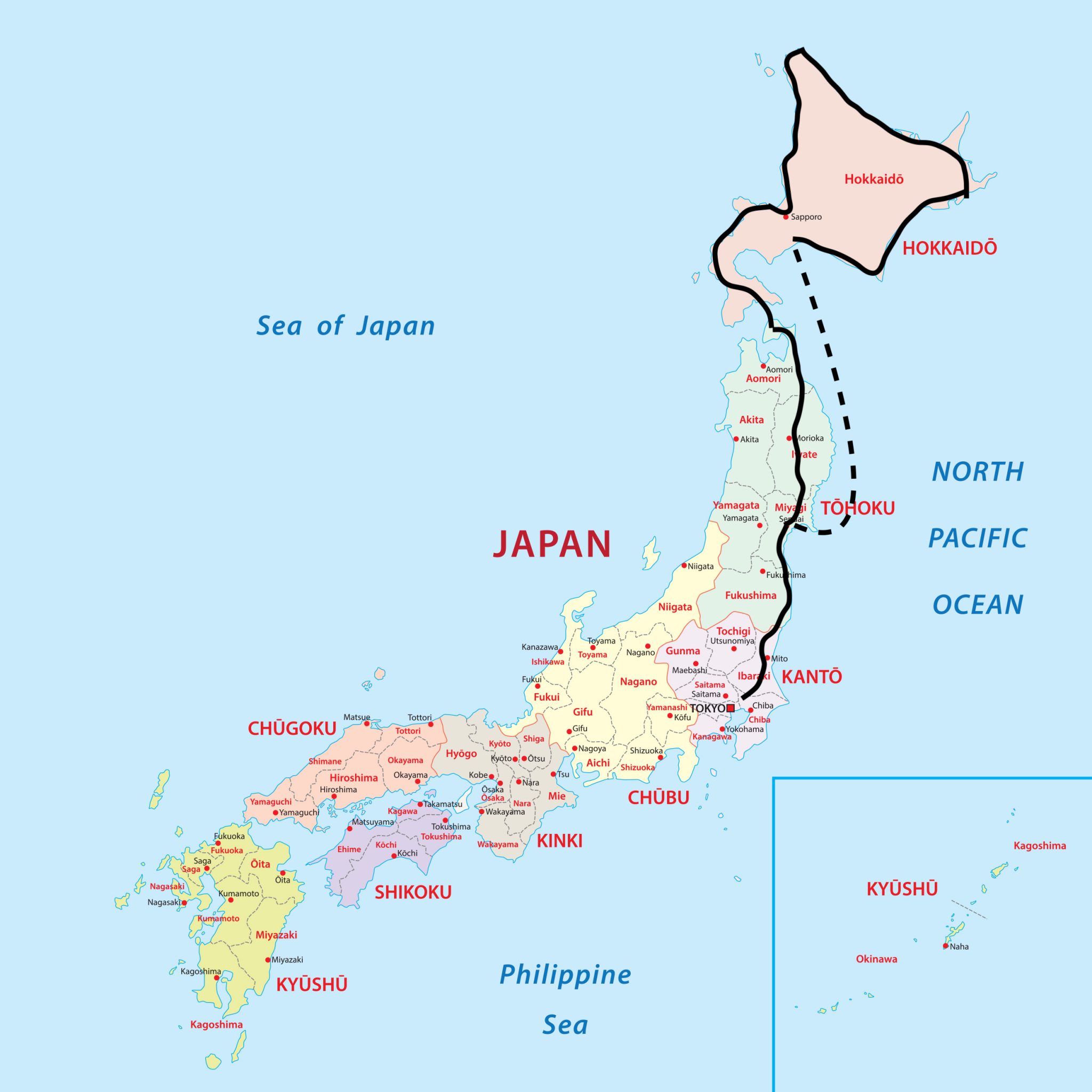Before I get into this post proper I wanted to inform you of a group of native Hokkaido people called the Ainu.
The Indigenous Ainu of Hokkaido
If you aren’t interested in the Ainu just skip the next several paragraphs, but it is a sad story. I’ve touched on the destruction of indigenous people in the past (Aztecs and Incas, Native Americans, etc., and there are many more examples from ancient and recent history). I used to feel some injustice that entire cultures have been destroyed by more “civilized” people. But should we even put a value judgement on this? Is it a shame that these cultures were destroyed, or was it just natural selection, a normal part of evolution? I talked about the Uyghurs of western China in a post during my last bike trip. Their culture is being wiped out by the Han Chinese as we speak. The British colonization of Tasmania in 1803 led to the genocide of the native aborigines there. And don’t even get me started on the Romans. But is it wrong, or is it just inevitable that weaker groups die out when overtaken by stronger tribes? Should we feel outrage? Sadness? Or should we just shrug and say, well, it was their time to go.
Anyway, this is all an introduction to the Ainu of Hokkaido. The Ainu were an indigenous tribe located mostly in Japan’s Hokkaido island and Russia’s Sakhalin island. Their ancestors are thought to have migrated to Hokkaido over 10,000 years ago. A distinct Ainu culture is believed to have emerged about 700 years ago and was based on simple hunting and fishing.
Men wore long bushy beards and women had distinctive blue tattoos, especially around the lips, that gave them the appearance of always smiling.
During the Edo period of Japan (1601–1868) the Ainu became increasingly involved in trade with the Japanese who controlled the southern portion of the island. Throughout this period the Ainu became increasingly dependent on goods imported by the Japanese, but also suffered from epidemic diseases such as smallpox. Although the contact contributed to increased mutual understanding, it also led to conflict which occasionally intensified into violent Ainu revolts against Japanese authority in 1669 and 1789.
The beginning of the Meiji Restoration in 1868 proved a turning point for Ainu culture. The Japanese government introduced a variety of social, political, and economic reforms, attempting to modernize the country. In 1899, the Japanese government passed an act labelling the Ainu as “former aborigines”, with the idea they would assimilate. This resulted in the government taking the land where the Ainu people lived and placing it under Japanese control. Also at this time, the Ainu were granted automatic Japanese citizenship, denying them the status of an indigenous group.
The Ainu were becoming increasingly marginalized on their own land. Over a period of only 36 years, the Ainu went from being a relatively isolated group of people to having their land, language, religion and customs truncated and forced to become Japanese. They were forced to learn the Japanese language, required to adopt Japanese names, and ordered to cease religious practices such as animal sacrifice and tattooing. In addition, the land the Ainu lived on was distributed to the Japanese who had decided to move to Hokkaido, encouraged by the Japanese government of the Meiji era to take advantage of the island’s abundant natural resources.
The vast majority of the Japanese men are believed to have compelled Ainu women into partnering with them as local wives. Intermarriage between Japanese and Ainu was also actively promoted by the Ainu to lessen the chances of discrimination against their offspring. As a result, many Ainu are indistinguishable from their Japanese neighbors. In 1966 the number of “pure” Ainu was only about 300.
It wasn’t until June, 2008, that the Japanese Diet passed a resolution recognizing the Ainu people as indigenous to Japan, and urging an end to discrimination against the group, stating, “The government would like to solemnly accept the historical fact that many Ainu were discriminated against and forced into poverty with the advancement of modernization, despite being legally equal to (Japanese) people.”
Today the official number of the Ainu is 25,000, but unofficially is estimated at 200,000 due to many Ainu having been completely assimilated into Japanese society and, as a result, having no knowledge of their ancestry.
Some Ainu are trying to regain their culture. Only a handful of people speak the language but it can be learned on the radio. Some younger people are attempting to revive old customs and traditions. There even a few bands that play traditional Ainu music.
But in the end this is just another sad story of indigenous people becoming subjugated, then losing their culture. Their time to go I guess. Maybe the old saying is true: might makes right.
OK, enough whining about lost cultures. Let’s catch up on the bike trip.
The weather has been challenging. It rains every couple days so I have to carefully watch the forecast. I hate getting wet and will get a hotel if there is even a hint of rain. But even so I got soaked one day. The forecast was for rain by 4 pm, which was plenty of time for me to get from one hotel to the next. Well darn the forecaster. it started raining at 11:00 AM and it took me three hours to get to my hotel. I and all my gear were totally soaked. I spent the next several hours drying everything out in my room. Not fun.
But it wasn’t all bad. Here are a few shots of the road headed to southeast Hokkaido.
The rocky coast.
Some islands off the coast.
At one point I saw hundreds of people fishing. It must be a good place.
A guy cleaning his catch.
Yes, fishing is big here.
There are lots of tunnels in this part of Hokkaido. This one was almost 5 km long. But my map showed an old road that bypassed the tunnel.
I hate riding in tunnels because there is no shoulder and the vehicles come up behind you screaming loud. Plus I still worry that an earthquake will hit while I am inside and bury me. I know, paranoid. Anyway, I decided to take the side road around the tunnel. But soon came upon this sign, which google translated as “road closed”.
But the gate was open and I know from experience that can often get around closed roads that vehicles can’t, so I tentatively carried on forward. But after a couple km, it was clear the road was closed. The hillside had given way and buried the road under a huge pile of dirt.
There was no way I could continue, so I backtracked and rode through the tunnel. Traffic was light, though, so it wasn’t that bad.
This is called the golden road due to the many tunnels in the area. This sign explains them. There are nine tunnels in the space of about 30 km.
I made a video to show how loud it gets in one of these suckers when a big truck zooms by. It feels a fleet of jets going by and is quite unnerving when there is no shoulder to ride on.
Besides the proper tunnels there are many of these semi tunnels which have one side exposed.
The adjacent hillsides need a lot of maintenance to keep the rocks and dirt from falling onto the road. See the worker in the photo? The arrow points to him.
I passed by a shipyard where they make fishing boats. Cool. Do you want red or blue?
The towns all have large flat stony areas for drying seaweed. Here is a guy hauling some away.
This part of the country has a lot of ryokans, or Japanese style inns. They just have tatami mats and futons, no beds, chairs or other furniture. But they all have an onsen, the public bath. I am addicted to these things now. Here I am refreshed and relaxed after my onsen.
A woman gathering seaweed.
In the town of Urakawa I stayed in a guesthouse which had a ramen restaurant next door. The ramen was great. A fellow patron who spoke some English sat next to me and we had some kind of conversation. He was impressed with my trip and ended up paying for my meal. Wow, what a great guy. Here is a photo of us. The guy on the left is the diner who paid for my meal. The guy on the right is the owner and chef.
My last camping night in Hokkaido. by the beach, waves crashing…nice and peaceful.
I had dinner in a soba noodle shop one night. The owner was training a new employee and they were both running around like crazy filling orders.
Sitting around in hotel rooms waiting for the rain to stop gives me some time to browse YouTube. Its amazing whats on there, as if you don’t know. Being a Monty Python fan the following clip caught my eye. It is John Cleese accepting an award for his role in A Fish Called Wanda, a funny, goofy movie starring Cleese, Michael Palin, Kevin Kline and Jamie Lee Curtis made in 1988. If you haven’t seen it, look it up. Its worth seeing. But Cleese’s speech is proof of his genius.
My ferry from Tomakomai to Sendai did not leave until 7 pm, so I checked out of my hotel and just loafed around town for the day. Went to a museum, had some pastries in a coffee shop and just enjoyed not riding. With great weather, it was a wonderful relaxing day. Of course there were the usual funny signs.
Um…OK…baffled again.
I hung out in a park for a bit and this guy was playing a guitar and singing. He was quite good.
I finally went down to the ferry dock at dusk and waited to board. I haven’t mentioned it but there have been a huge number of guys on motorcycles going past me. Dozens go by each day and give me a wave. It must be a thing to go to Hokkaido and motor around for bit. There were dozens of motorcyclists waiting to board the ferry with me.
There are a few different options for accommodation on the ferry, which takes about 15 hours. It leaves at 7 pm and arrives at 10 am the next day. The cheapest is a dormitory room, where a few dozen people sleep on pads in one big room. That did not appeal to me, but a private room was too expensive, so for about $100 I opted for a cubicle, like one of those capsule hotels you may have heard about. It was big enough to sit up and lay down, but no bigger. I actually slept great in there.
Here’s a little video I made of my “room”.
I saw this sign on the ferry and had to chuckle. The Japan are so well behaved, is this really necessary? So—the rules:
No getting drunk
No playing loud music and dancing
No smoking in undesignated places
No fighting or yelling
No smashing up furniture or stealing girl’s handbags
No groping women or talking about their underwear? I assume this applies to strangers, but maybe they also mean no public displaces of romance? HA.
Well this has been a long post but I hope you have enjoyed it. Here is my current position back in Sendai. The plan is to head west across the country to Niigata, pick up my spare saddle, then meander back to Tokyo where I depart for Vietnam on September 21.


